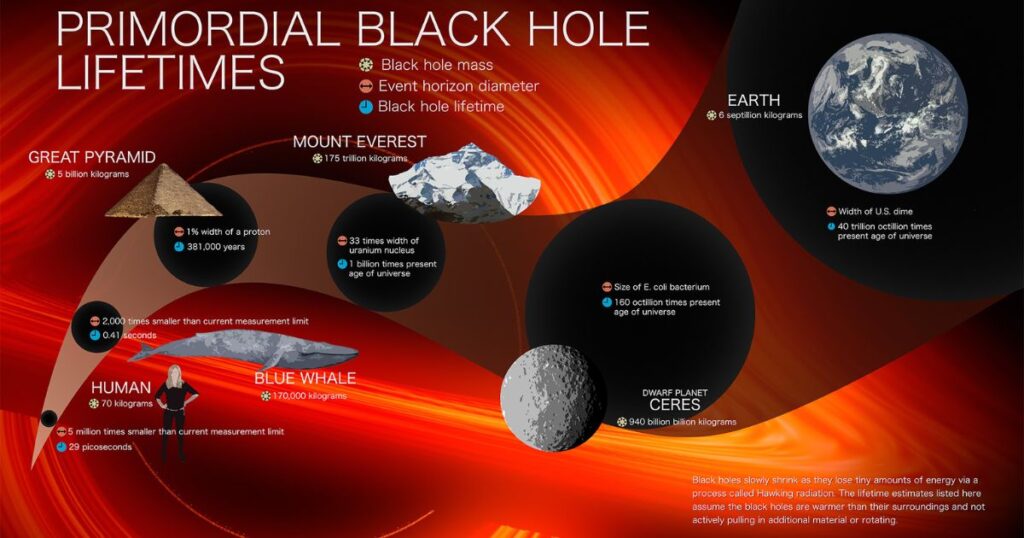Scientists made a fascinating discovery, primordial black holes might be hiding in planets, asteroids, and even right here on Earth! These mysterious black holes are believed to have formed soon after the Big Bang, making them some of the oldest objects in the universe.
Ancient Origins and Tiny Size
Primordial black holes are tiny, with masses much smaller than those of stellar black holes. They are thought to have formed from extremely dense pockets of matter that collapsed under their own gravity. Because of their small size, they are difficult to detect, but recent research suggests they could be hiding in plain sight.
Hiding in Celestial Bodies
One of the most intriguing ideas is that these primordial black holes could be inside planets and asteroids. If this is true, they could be slowly consuming the cores of these celestial bodies from the inside out, leaving behind hollow structures. This would have significant implications for our understanding of the universe and the objects within it.
The possibility of primordial black holes existing within our solar system is also exciting. Scientists believe that there could be a halo of tiny black holes surrounding the Milky Way, and some of these might be scattered throughout our solar system. The gravitational pull of these black holes could affect the motion of planets, asteroids, and comets in detectable ways.
Clues to the Early Universe
If primordial black holes are indeed present in planets and asteroids, they could provide valuable clues about the early universe. These black holes are considered candidates for dark matter, a mysterious substance that makes up most of the universe’s mass but has never been directly observed. Studying primordial black holes could help scientists understand the nature of dark matter and its role in the evolution of the universe.

The search for primordial black holes is still in its early stages, but scientists are optimistic about the potential discoveries. Advanced telescopes and detectors are being used to search for signs of these elusive objects. If found, primordial black holes could revolutionize our understanding of the universe and open up new avenues for research.
Methods of Detection
There are a few ways scientists are attempting to detect these primordial black holes. One method involves looking for their gravitational influence on nearby objects. Because black holes have intense gravitational fields, their presence can alter the orbits of planets and asteroids. By carefully tracking the motion of these objects, scientists hope to identify anomalies that could indicate the presence of a black hole.
Another approach is to search for high-energy radiation emitted by matter as it falls into a black hole. As material spirals into a black hole, it heats up and emits X-rays and other forms of radiation. By using space-based telescopes to scan the skies for these emissions, scientists can pinpoint potential black hole locations.

Primordial black holes could also reveal themselves through gravitational lensing, a phenomenon where the gravity of a massive object bends and magnifies the light from a more distant object. If a primordial black hole passes in front of a star or galaxy, it can create a temporary brightening that can be detected by telescopes.
Implications for Our Understanding
Despite the challenges, the search for primordial black holes is gaining momentum. With advancements in technology and an increasing number of observations, scientists are hopeful that they will soon uncover definitive evidence of these ancient objects.
The discovery of primordial black holes would have profound implications for our understanding of the cosmos. Not only would it provide insights into the conditions of the early universe, but it would also shed light on the nature of dark matter and the role of black holes in cosmic evolution.




